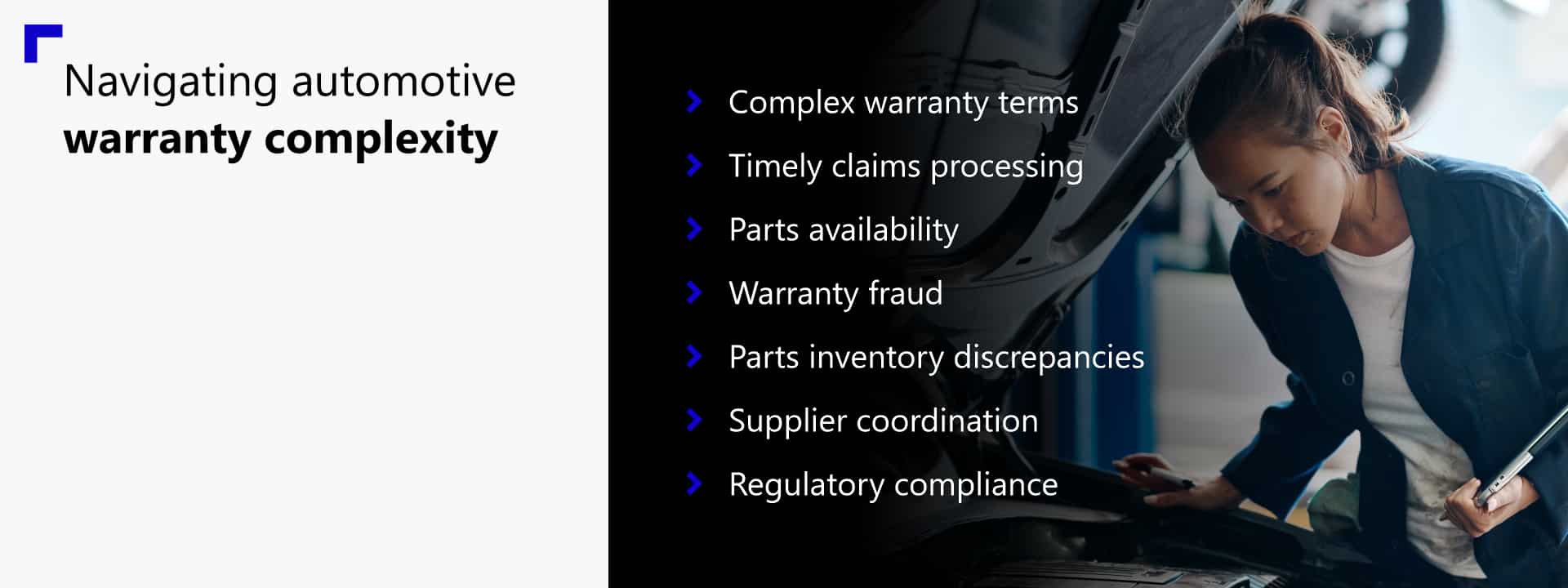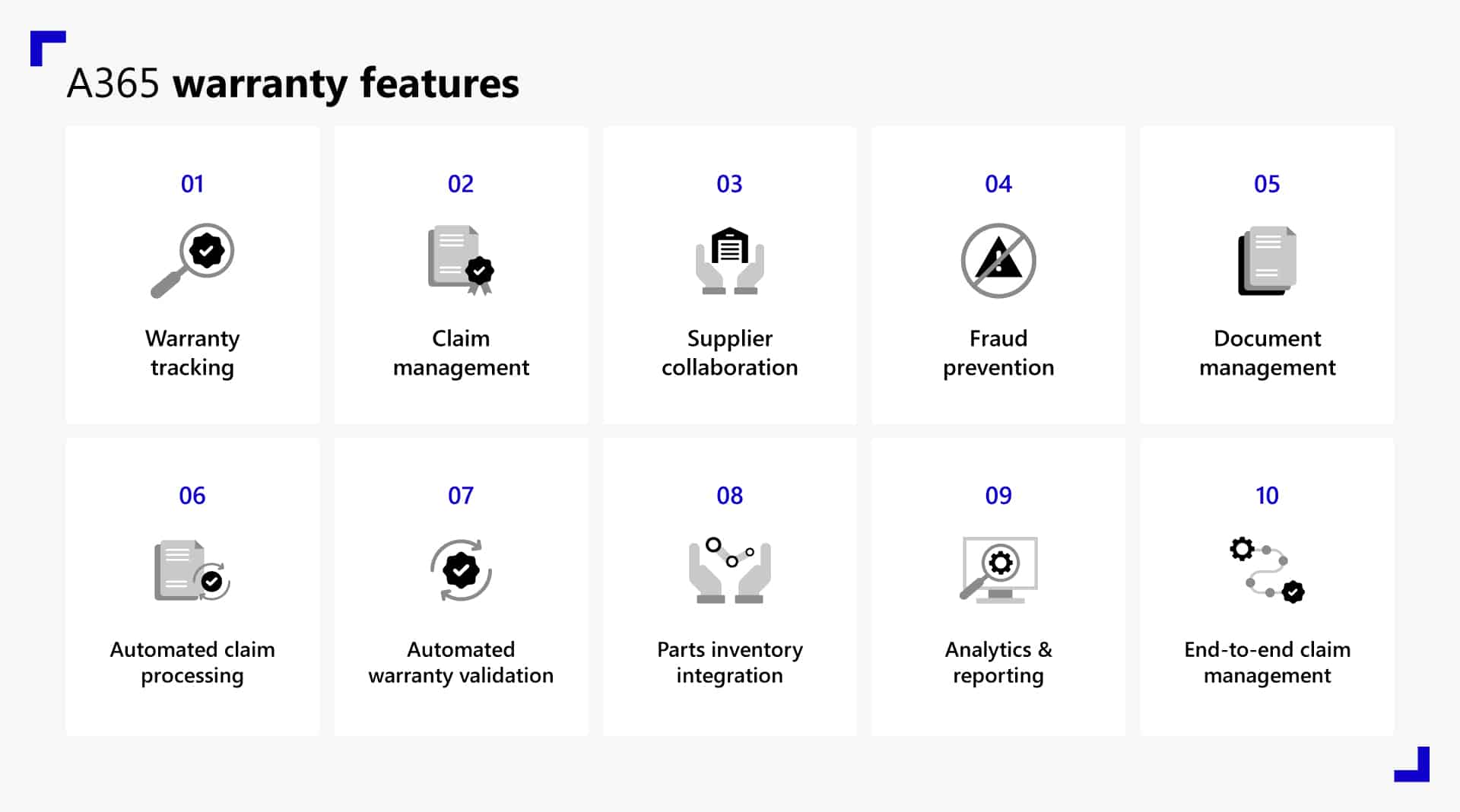In the automotive industry, where new technologies and sleek vehicle designs always grab attention, one important area often gets overlooked: warranty management. This can significantly impact how happy customers are with their vehicles.
Picture this: a customer buys a new car and is excited about it, but when something goes wrong and they need a repair, they face frustration and delays. This happens because dealing with warranty issues can be really complicated.
Understanding the terms, processing claims quickly, and making sure the right parts are available are just a few of the challenges that automotive companies face.
These problems can make customers unhappy and damage the business’s reputation. However, there are ways to tackle these issues and turn them into opportunities to improve and excel.
In this blog, we’ll look at some of the biggest challenges in managing warranties for automotive businesses. We’ll discuss why these challenges occur and how companies can deal with them effectively.
We’ll also discover how A365 is the solution for these problems and explore some of A365’s features that make it a game-changer for the industry. By understanding these issues and learning how to handle them, automotive businesses can keep their customers satisfied and loyal.
Now, let’s first take a look at the challenges automotive businesses face around warranty management.
Navigating automotive warranty complexity

- Complex warranty terms
Automotive warranties often come with tons of terms and conditions, varying by manufacturer, model, and even geographic region. These complexities can lead to confusion for both customers and dealers. Misunderstandings about what is covered under warranty can result in disputes and dissatisfaction.
Why it happens: The complexity arises because warranties need to cover a wide range of potential issues and scenarios. Manufacturers aim to protect themselves from excessive claims while still offering comprehensive coverage to attract customers. This balancing act results in intricate terms that are difficult for the average customer to understand.
- Timely claims processing
Processing warranty claims promptly is essential for customer satisfaction. However, delays are common due to the need for thorough validation and verification of claims. These delays can frustrate customers and negatively impact their perception of the brand.
Why it happens: Timely claims processing is hampered by the need to verify the validity of claims, gather necessary documentation, and ensure that all conditions of the warranty are met. Manual processing and outdated systems can further slow down this process, leading to longer wait times for customers.
- Parts availability
Ensuring the availability of parts needed for warranty repairs is another significant challenge. Delays in sourcing and shipping parts can extend repair times, causing inconvenience to customers and increasing operational costs for businesses.
Why it happens: Parts availability is affected by factors such as supply chain disruptions, limited inventory, and the need to source specific components from various suppliers. Unexpected demand spikes and logistical issues can also contribute to delays.
- Warranty fraud
Warranty fraud, including false claims and misuse of coverage, can lead to significant financial losses for automotive businesses. Detecting and preventing fraud requires robust systems and vigilant monitoring.
Why it happens: Fraud can occur due to the high value of warranty claims and the difficulty in verifying the authenticity of some claims. Lack of proper oversight and advanced detection systems can make it easier for fraudulent claims to slip through the cracks.
- Parts inventory discrepancies
Inaccuracies in parts inventory can cause significant disruptions in warranty management. Discrepancies between recorded and actual inventory levels can lead to delays in repairs and increased operational costs.
Why it happens: Inventory discrepancies can result from poor record-keeping, human error, theft, and inefficient inventory management systems. These issues are often worsened by a lack of real-time tracking and automated processes.
- Supplier coordination
Coordinating with multiple suppliers for parts and services can be challenging, especially when dealing with complex warranty claims that require specialized components. Miscommunication and delays in the supply chain can hinder the claim process.
Why it happens: Supplier coordination is complicated by the involvement of numerous suppliers, each with its own processes and timelines. Variations in quality, lead times, and communication practices can lead to inconsistencies and delays.
- Regulatory compliance
Compliance with various regulatory standards and guidelines is critical in warranty management. Different regions may have specific requirements for coverage, claims processing, and record-keeping.
Why it happens: Regulatory compliance is challenging because laws and regulations can vary widely between countries and even regions within countries. Staying up-to-date with these regulations and ensuring all processes comply requires continuous monitoring and adjustments.
Unlocking seamless warranty operations with A365
A365 is a game-changer for the automotive industry, simplifying all levels of warranty activities. It is designed to deliver a prime customer experience, strengthen supplier ties, achieve a swifter turnaround time, and reduce expenses, supporting after-sales service.
A365’s automotive warranty features unlock value for customers, dealerships, service centers, and OEMs by facilitating and streamlining intelligence, detecting fraudulent claims, identifying counterfeit parts, managing unjustified claims, optimizing parts inventory, and enhancing supplier recovery processes.
With A365, automotive businesses can improve operational efficiency, reduce costs, and enhance customer satisfaction and loyalty.
Elevating customer satisfaction through A365 warranty features
A365’s robust features are designed to enhance customer satisfaction by streamlining operations and ensuring a seamless experience. From tracking warranty coverage to processing claims and managing documents, A365 provides a comprehensive solution that enables automotive businesses to deliver efficient and effective service.

Warranty tracking: A365 offers robust tracking capabilities, allowing you to monitor the coverage for each vehicle comprehensively.
Automated claim processing: Streamline your claims process with A365’s automated workflows, reducing manual errors and accelerating claim approvals.
Claim management: Manage claims efficiently with A365’s intuitive interface, enabling you to track, process, and resolve claims seamlessly.
Document management: Easily store and retrieve claim-related documents, such as repair orders and policies, within the A365 system.
Automated warranty validation: A365 automates the validation process, ensuring that claims meet predefined criteria before processing.
Supplier collaboration: Collaborate with suppliers in real-time, facilitating seamless communication and resolution of warranty-related issues.
Parts inventory integration: Integrate parts inventory data with A365 to optimize warranty part management and availability.
Analytics & reporting: Gain valuable insights into warranty performance with reports, empowering you to make informed decisions.
End-to-end claim management: A365 offers end-to-end claim management capabilities, from claim initiation to resolution, ensuring a seamless process for both customers and service providers.
Fraud prevention: Protect your business from warranty fraud with A365’s fraud prevention features, which help detect and mitigate fraudulent claims.
Want to learn more about how A365 is revolutionizing automotive warranty management? Download our full factsheet to discover how A365’s features can help your business improve operational efficiency, reduce costs, and enhance customer satisfaction.













